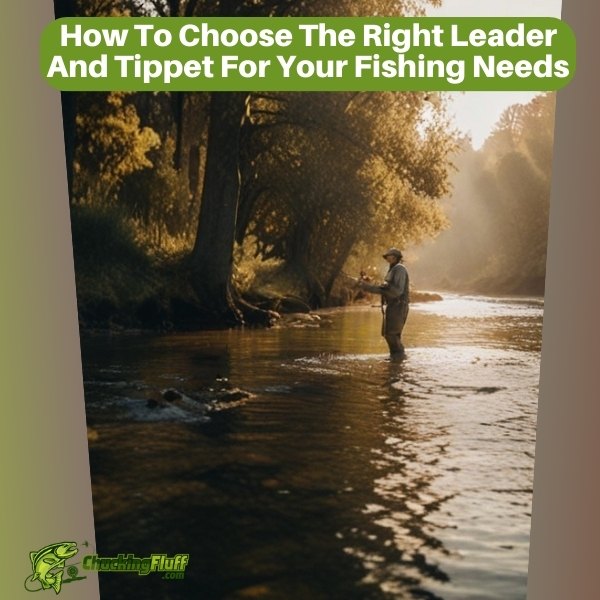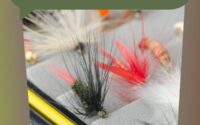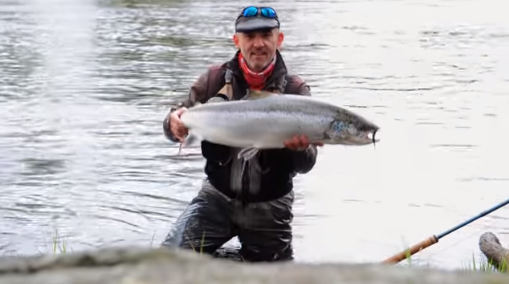| Disclosure: Just to be open and honest the buttons and links you click on in the website will in most cases take you to another website where you can purchase the products I am reviewing. As an Amazon Associate I earn from qualifying purchases. |
How To Choose The Right Leader And Tippet For Your Fishing Needs
Quick Post Navigation
- Introduction
- What Are Leaders and Tippets?
- Why Leaders and Tippets Matter in Fly Fishing
- Components of a Leader Explained
- Types of Leaders
- Types of Tippets
- Leader and Tippet Materials: Monofilament vs. Fluorocarbon
- Understanding Leader and Tippet Sizes (X Rating Explained)
- Choosing the Right Leader Length
- Choosing the Right Tippet Strength
- Matching Leaders and Tippets to Fly Types
- Choosing Leaders and Tippets for Different Water Types
- How to Attach Tippets to Leaders
- Replacing and Maintaining Leaders and Tippets
- Common Mistakes When Choosing Leaders and Tippets
- Conclusion
- FAQs
- “Check out some of our other Buying Guides”
Introduction
Choosing the right leader and tippet is like finding the perfect link between your fly and the fish you’re targeting. It’s more than just tying on some extra line — these components impact your presentation, casting accuracy, and even your ability to land fish successfully.
A well-matched leader and tippet setup can be the difference between fooling a wary trout and watching it swim away untouched. So, how do you make the right choice? Let’s break it all down in detail, from definitions to material types and specific fishing scenarios.
What Are Leaders and Tippets?
Definition and Roles
A leader is the clear, tapered section of line that connects your fly line to the fly. Its purpose is to transfer the energy from your cast down the line, allowing the fly to land gently and naturally on the water.
A tippet is the final, thinner section at the end of the leader where the fly is tied. Its primary role is to provide a nearly invisible connection to the fly while still being strong enough to land a fish.
Key Differences Between Leaders and Tippets
- Leader: Thicker, tapered, and aids in energy transfer during the cast.
- Tippet: Thinner, non-tapered, and designed for stealth and presentation.
While they work together, the leader handles the casting energy, while the tippet provides a stealthy connection to the fly.
Why Leaders and Tippets Matter in Fly Fishing
Choosing the wrong leader or tippet can lead to poor fly presentation, spooked fish, and lost catches. Here’s why they are crucial components of your setup:
1. Presentation and Accuracy
The leader ensures your fly turns over correctly during a cast. A properly tapered leader prevents your fly from landing with a splash, ensuring it looks as natural as possible.
2. Fly Turnover and Drift Control
A well-balanced leader and tippet setup gives you better control over how the fly drifts. This helps you match the current and present the fly more realistically.
3. Avoiding Fish Spooking
Fish, especially trout, are wary of anything unnatural. A thin, clear tippet reduces visibility, making it harder for fish to detect the line.
Components of a Leader Explained
A leader is more than just a piece of line; it has multiple sections designed for specific purposes.
1. Butt Section
- Thickest part, connects directly to the fly line.
- Designed to transfer energy during the cast.
- Often made of stiffer material for better turnover.
2. Tapered Midsection
- The middle section that gradually reduces in diameter.
- Helps transition the energy from the thick butt to the delicate tippet.
3. Tippet Section
- The thinnest part where the fly is tied.
- Provides stealth and minimizes visibility.
Types of Leaders
1. Tapered Leaders
These are the most common and consist of a seamless taper from thick to thin. They are perfect for most fishing situations and ensure smooth energy transfer.
2. Knotted Leaders
Knotted leaders consist of separate sections of line joined by knots. They are less common but allow for more customizability in length and taper.
3. Specialty Leaders
Some leaders are designed for specific techniques, such as:
- Euro Nymphing Leaders: Longer, thinner leaders for sensitivity.
- Saltwater Leaders: Thicker and more resistant to corrosion.
- Bass/Pike Leaders: Built with heavier materials for bigger fish.
Types of Tippets
Tippet material plays a huge role in presentation and line visibility. The two primary types are:
1. Monofilament Tippet
- Material: Nylon-based.
- Visibility: More visible in the water.
- Best For: Dry flies due to its ability to float.
2. Fluorocarbon Tippet
- Material: Denser polymer.
- Visibility: Nearly invisible underwater.
- Best For: Nymphing and wet flies, as it sinks faster.
3. Hybrid Tippet Materials
Some modern tippet materials blend both nylon and fluorocarbon qualities, offering a balance between strength and stealth.
Leader and Tippet Materials: Monofilament vs. Fluorocarbon
Monofilament (Nylon)
- Floats better, ideal for dry flies.
- Easier to handle and knot.
- More affordable.
Fluorocarbon
- Sinks faster, perfect for nymphing.
- More abrasion-resistant.
- Nearly invisible underwater but more expensive.
Understanding Leader and Tippet Sizes (X Rating Explained)
The X-rating system can be confusing for beginners, but it’s essential to match the right tippet size with the fly you’re using.
The X rating refers to the diameter of the tippet, with lower numbers being thicker and stronger:
- 0X: Strongest and thickest.
- 6X: Thinnest, used for small dry flies.
Matching Tippet Size to Fly Size (The Rule of 3)
A common rule is: Divide the fly size by 3 to find the appropriate tippet.
- Size 12 fly = 4X tippet.
- Size 18 fly = 6X tippet.
Choosing the Right Leader Length
Standard Leader Lengths and Their Uses
- 7.5 ft: Great for small streams and shorter casts.
- 9 ft: Ideal all-around length for most trout fishing.
- 12 ft and above: Best for wary fish in clear water.
Short vs. Long Leaders
- Short Leaders: Easier for beginners and windy conditions.
- Long Leaders: Provide better stealth and drag control but require more skill.
Choosing the Right Tippet Strength
Tippet strength is measured in pound test and affects both visibility and durability.
- 2X – 4X: Best for larger flies and aggressive species.
- 5X – 6X: Ideal for trout and smaller flies.
- 7X: Ultra-fine for the most delicate dry fly presentations.
Matching Leaders and Tippets to Fly Types
Dry Flies
- Use monofilament tippet for better floatation.
- Choose lighter strengths like 5X-6X for delicate presentations.
Nymphs and Wet Flies
- Fluorocarbon tippet sinks faster and stays invisible.
- Use slightly stronger sizes, like 4X-5X.
Streamers and Larger Patterns
- Heavier leaders and tippets (2X-3X) for larger flies and stronger species.
Choosing Leaders and Tippets for Different Water Types
Rivers and Streams
- Standard 9-ft tapered leaders work best.
- Use longer tippets for wary trout in clear water.
Lakes and Stillwaters
- Longer leaders (12 ft+) for better stealth.
- Fluorocarbon is ideal for nymphs and wet flies.
Saltwater
- Heavy-duty fluorocarbon leaders for aggressive species.
- Tippets in the range of 0X to 2X for strength.
How to Attach Tippets to Leaders
Best Knots for Attaching Tippets
- Loop-to-Loop Connection: Simple and reliable.
- Double Surgeon’s Knot: Great for adding tippet quickly.
- Blood Knot: Excellent for smooth energy transfer.
Replacing and Maintaining Leaders and Tippets
When to Replace a Leader
- When it becomes frayed or cracked.
- If it’s lost its original taper.
When to Replace a Tippet
- After multiple fish or visible damage.
- If you lose length and need better presentation.
Common Mistakes When Choosing Leaders and Tippets
- Overpowering the Presentation: Using a tippet too thick for the fly.
- Wrong Material for Conditions: Fluorocarbon for dry flies.
- Incorrect Tippet Size: Not matching fly size with the right X-rating.
Conclusion
Choosing the right leader and tippet transforms your fly fishing success. Pay attention to material, length, and size compatibility to ensure better fly presentation and stronger hooksets. Experiment and adjust based on your target species and water conditions for the best results.
FAQs
1. What is the difference between a leader and a tippet?
A leader is the entire tapered section; the tippet is the thin end where the fly is tied.
2. How often should I change my tippet?
After landing multiple fish or if it becomes visibly worn.
3. Can I use fluorocarbon for dry flies?
It’s not ideal as fluorocarbon sinks.
4. What’s the best leader for nymphing?
Longer fluorocarbon leaders with fine tippet sections work best.
5. How do I choose the right leader length?
Start with a 9-ft leader for general use and adjust based on clarity and target species.



